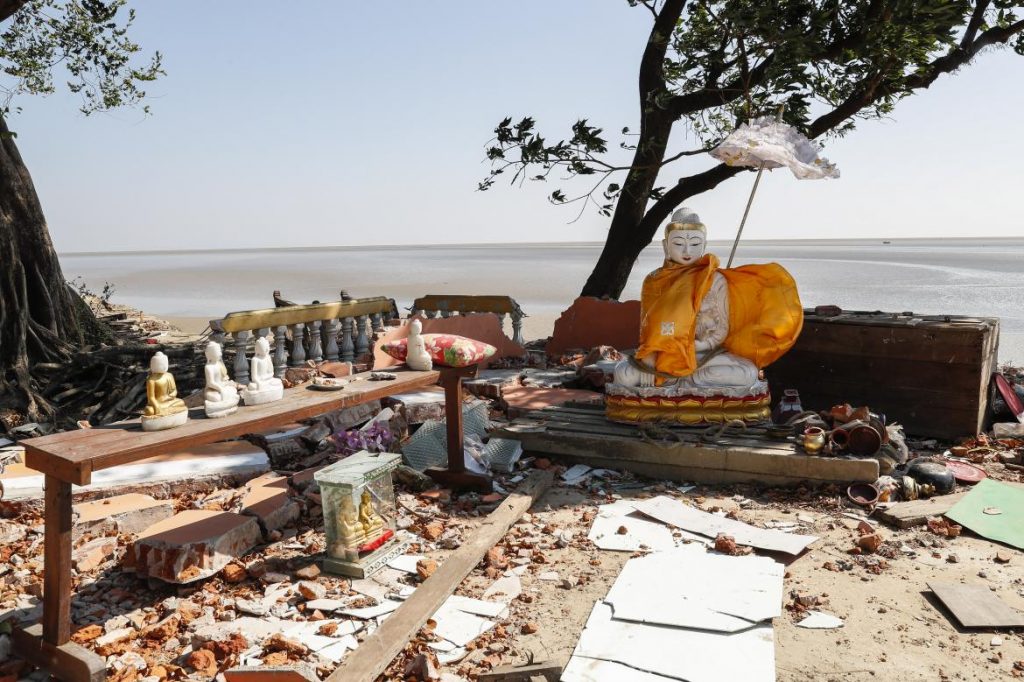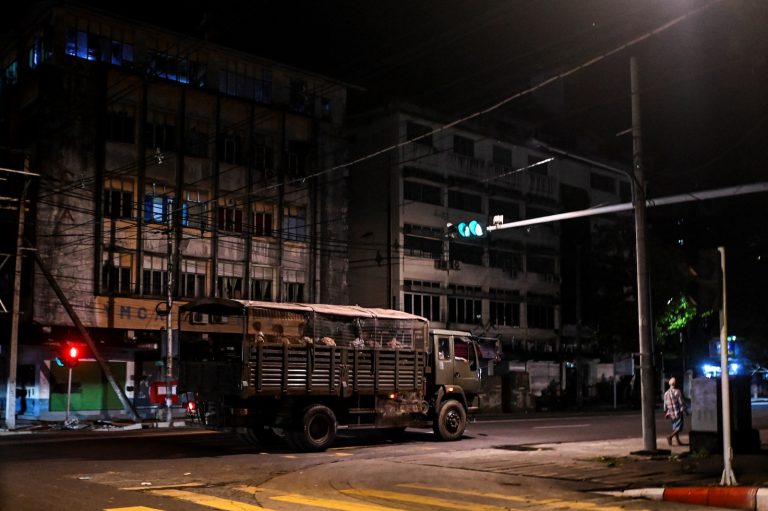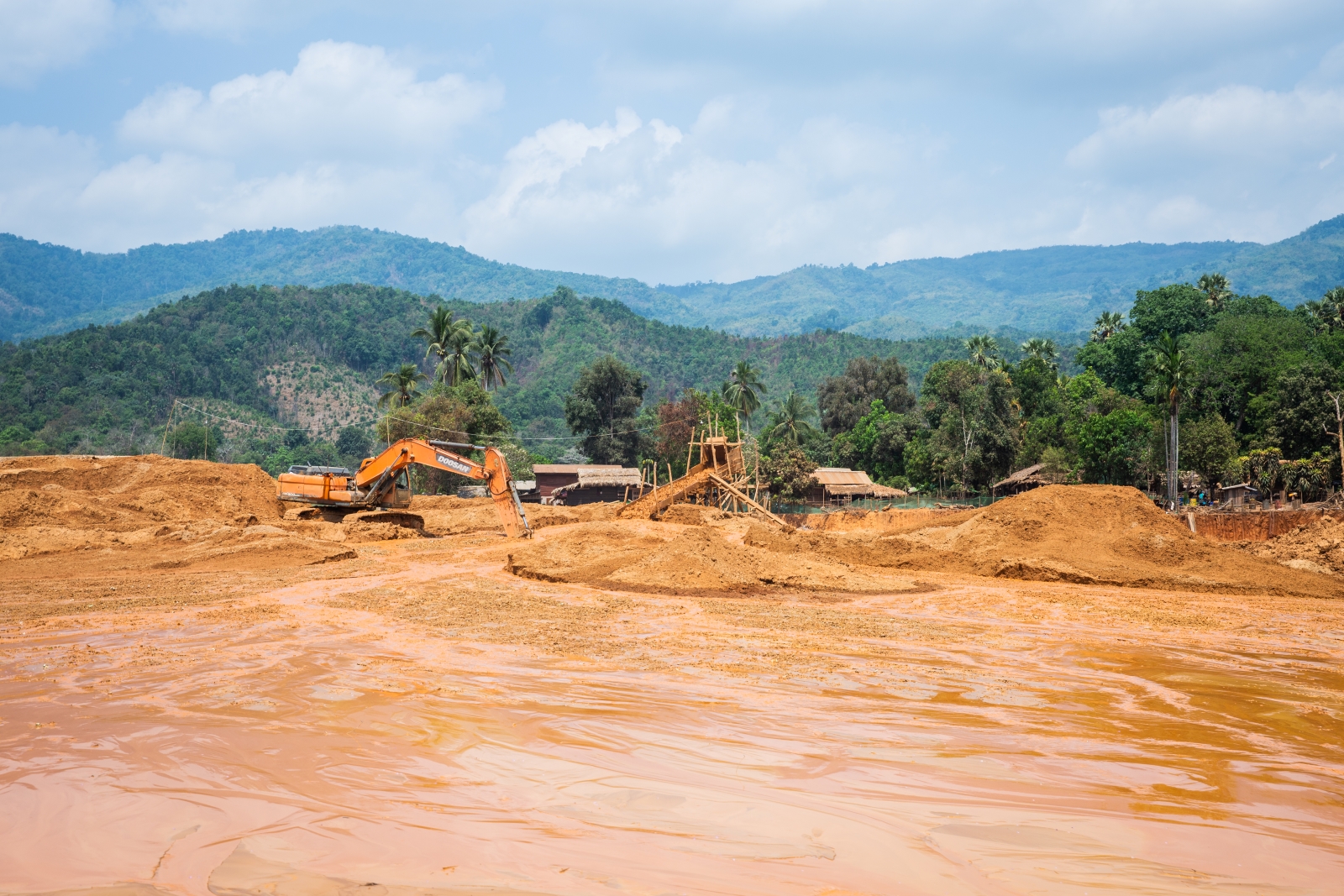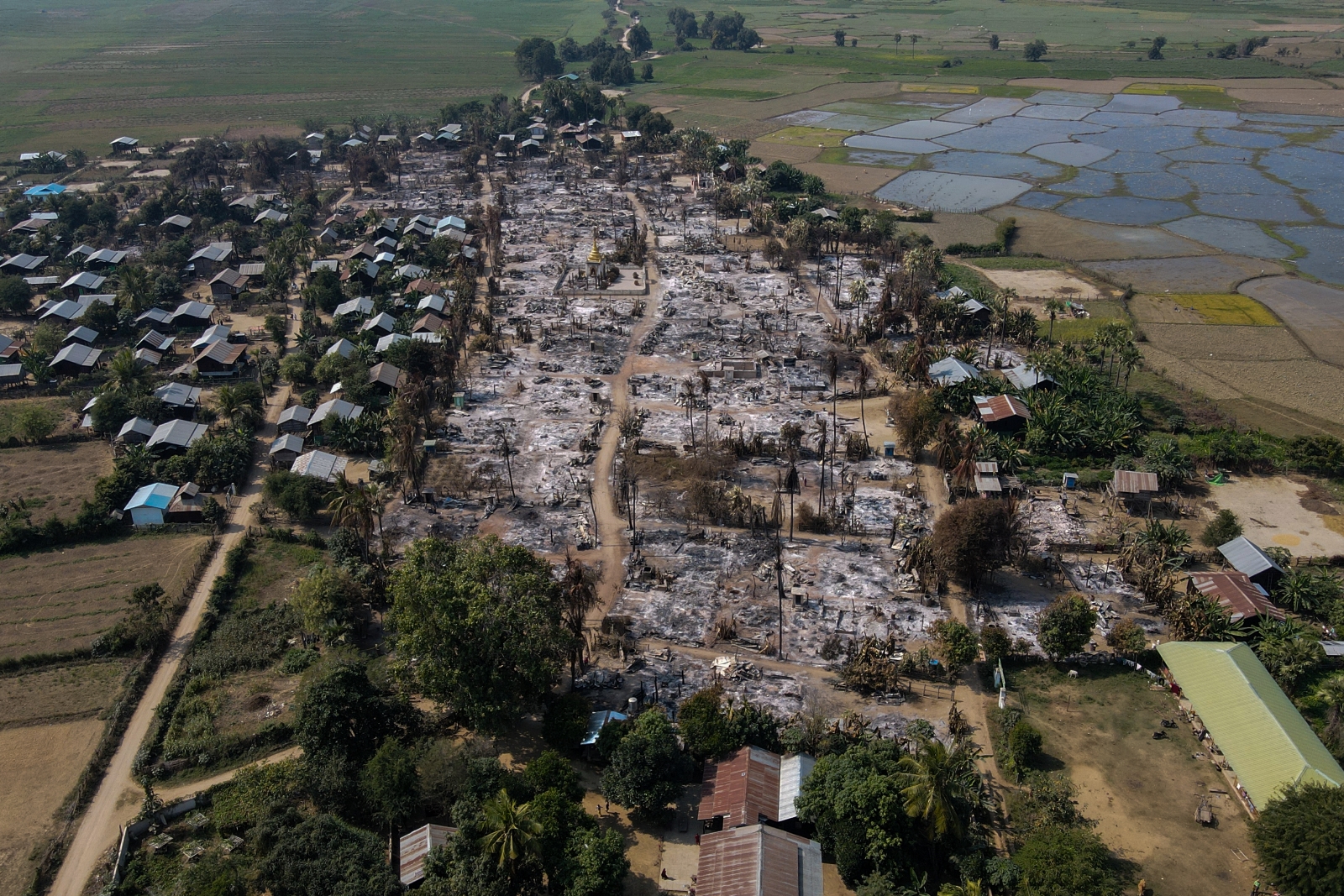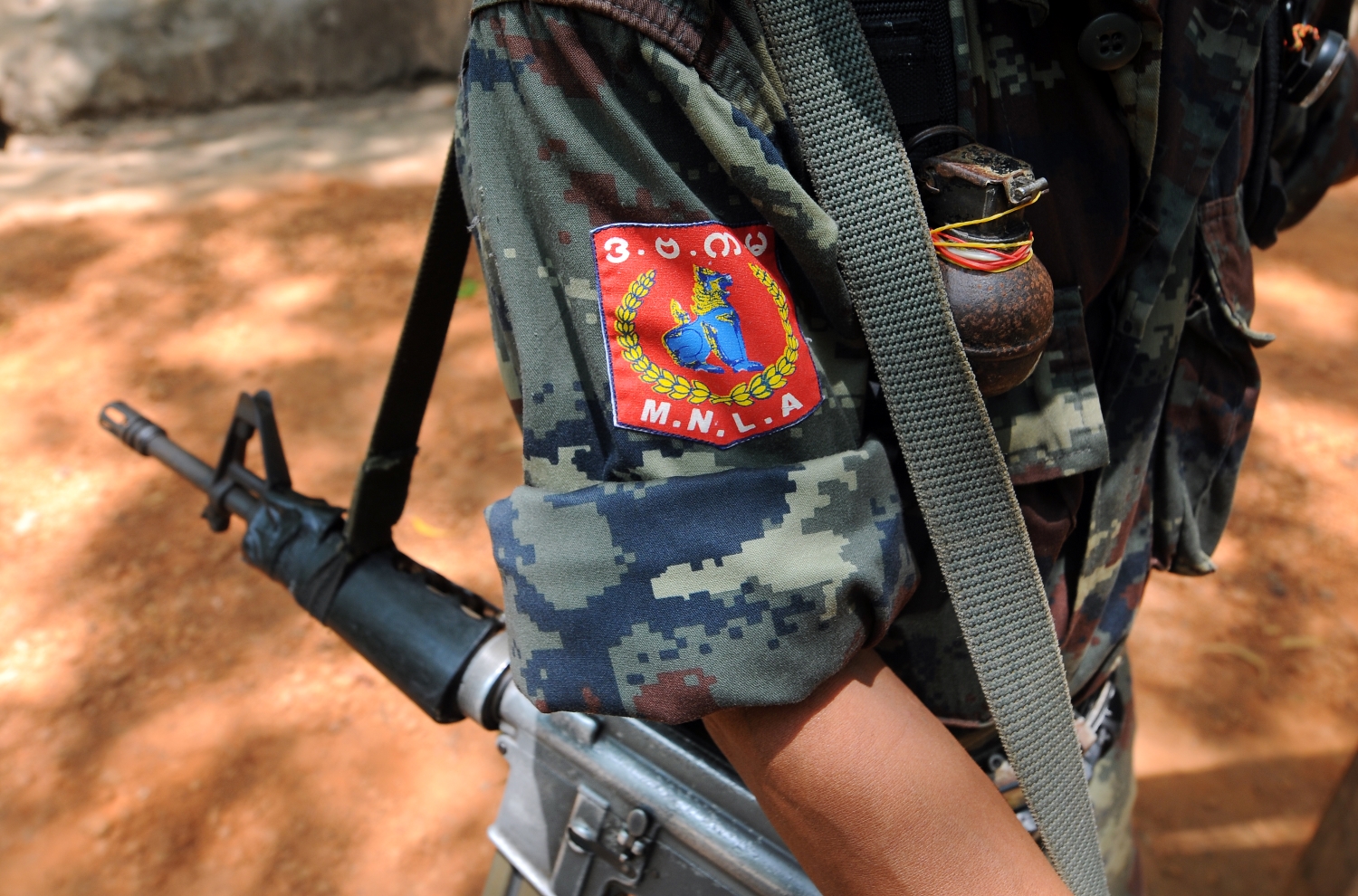The Gulf of Mottama and the rivers flowing into it create a unique natural environment, but one that often poses challenges to the people living on its shores.
By KONRAD STAEHELIN | FRONTIER
Photos NYEIN SU WAI KYAW SOE
FOR MORE than a century, a monastery built of rendered brick stood in the centre of Ta Dar U village, about 50 kilometres southeast of Bago.
Today, the foundations and parts of the wall are all that remain. Gone, too, are the more than 1,000 people who once lived in Ta Dar U. When they left 18 months ago, they took all they could with them. Every house built of wood was disassembled, and almost all of the monastery was dismantled too.
But they left behind three small and one large Buddha images inside the remains of the monastery in the hope that they would provide spiritual protection from the threat posed by the changing course of the nearby Sittaung River.
Support more independent journalism like this. Sign up to be a Frontier member.
When Ta Dar U’s residents abandoned the land that had sustained the village for generations, the Sittaung still flowed a few kilometres east of their homes. Erosion though was rapidly devouring the farmland that functioned as a buffer between the river and the village. The foundations of the few brick homes in the village have mostly been swallowed. The remains of the monastery will likely be next – the river already flows right next to it.
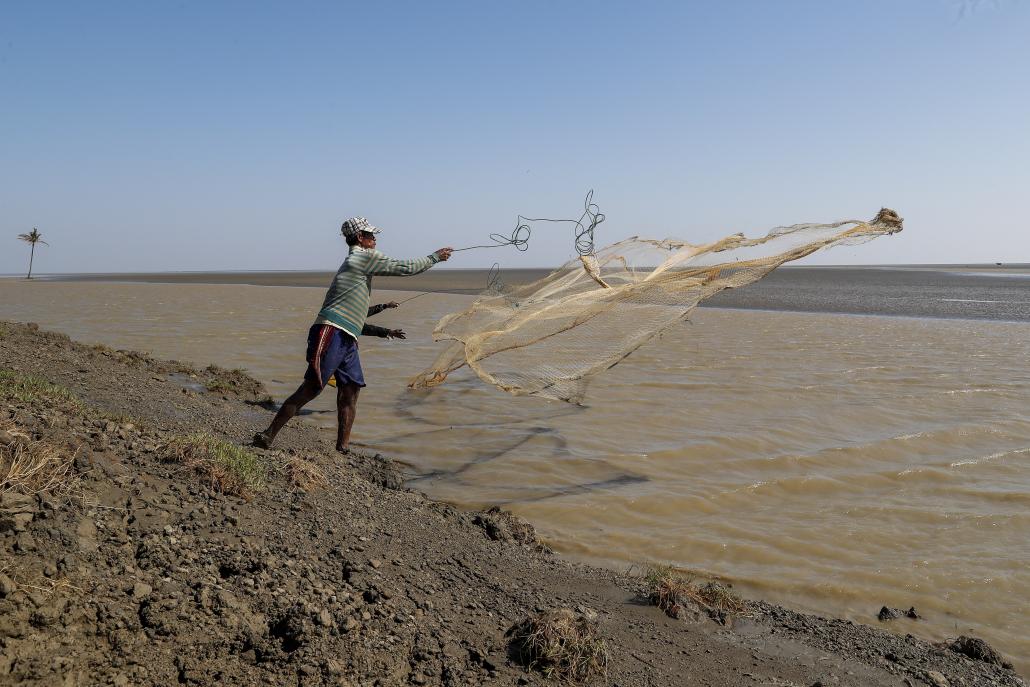
A fisherman throws his net into the Gulf of Mottama where the village of Ta Dar U stood until just a few years ago.
‘Nowhere quite as muddy in the world’
Ta Dar U sits on a floodplain close to the mouth of Sittaung, where the river empties into the Gulf of Mottama.
The sinuous loops of the Sittaung are a sight that often captivates passengers on flights making a landing approach to Yangon International Airport, especially at dawn or dusk.
It is normal for rivers to meander across such flood plains. The centrifugal forces of currents carrying heavy loads of sediment slowly but inexorably cut into the outside banks and create the loops that can become oxbow lakes.
Riverbank erosion is hard to predict. In some areas, the river’s course has moved back and forth over several kilometres in only a few years, but in others it has moved steadily in the same direction for decades. Climate change has so far played only a minor role in this process, but its impact will be more strongly felt in coming decades as sea levels rise.
The pace at which rivers alter floodplain landscapes can take hundreds of years but the erosive power of the lower reaches of the Sittaung is unusually strong, which means it can cause more disruption over a relatively short time.
A major influence on the process involving the Sittaung is the interplay between the river and the Gulf of Mottama. The gulf, bordered by Yangon and Bago regions to the west and Mon State to the east, is one of the most important intertidal mudflats in the world because of various dynamic factors.

Mother-of-three Ma Thaw Htwe says she has had to move further landwards three times in the past 30 years due to rapid riverbank erosion.
The Sittaung is one of four large sources of sediment that flow into the gulf, along with the Ayeyarwady, Yangon and Thanlwin (Salween) rivers. In addition to this sediment there is also a powerful tidal bore. Switzerland-based NGO the International Union for Conservation of Nature says the gulf has a seven-metre tidal range that drives currents of up to three metres a second, producing “constantly changing patterns of sediment deposition and erosion. There is nowhere quite as muddy or as dynamic anywhere in the world.”
North of an imaginary line between the mouths of the Yangon and Thanlwin rivers, the gulf is no deeper than 30 metres, which is why it glows bright blue on Google Maps satellite images. The sediment and nutrients washed into the gulf by the four rivers nourish a big population of small fish and crustaceans that feed up to 150,000 migratory waterbirds that winter around its shores each year. They include hundreds of spoon-billed sandpipers (Calidris pygmaea), which is listed as critically endangered by the IUCN because it has a very small population that is undergoing rapid decline. The most recent estimates put the population of the birds at no more than 120 pairs, or 242 to 378 individuals.
The powerful tidal bore in the Sittaung is due to the gulf being both shallow and funnel-shaped, which generates currents of unique speeds and volumes, especially during a full moon. The tidal bore surges for dozens of kilometres up the mouth of the Sittaung, and produces a wave so high that surfers reportedly rode it for about half an hour in 2017.

The remains of the foundations of a house in Ta Dar U village, where the Sittaung River has been steadily devouring the riverbank, forcing residents to relocate.
A constant move landward
The dirt tracks that lead east from the Thanlyin-Bago road to the shore of the gulf deteriorate progressively to the stage where they can only be negotiated by motorbike. During the rainy season, from around June to October, the only means of transport is by boat. The closer to the coast, though, the more pristine the conditions become. The air is cleaner, the sea breeze is free of mosquitoes, and farm animals, including pigs, goats and poultry, roam across the roads.
Although just 50 km away, it feels worlds apart from the dusty, truck-lined streets of Bago or the cramped concrete jungle of downtown Yangon. Life in this rural area where the Sittaung empties into the Gulf of Mottama could be pleasant if not for the threat from erosion and the powerful tidal bore.
About 62,000 people live in coastal villages on the Gulf of Mottama in Yangon and Bago regions and Mon State, earning a living from fishing, farming and raising livestock.
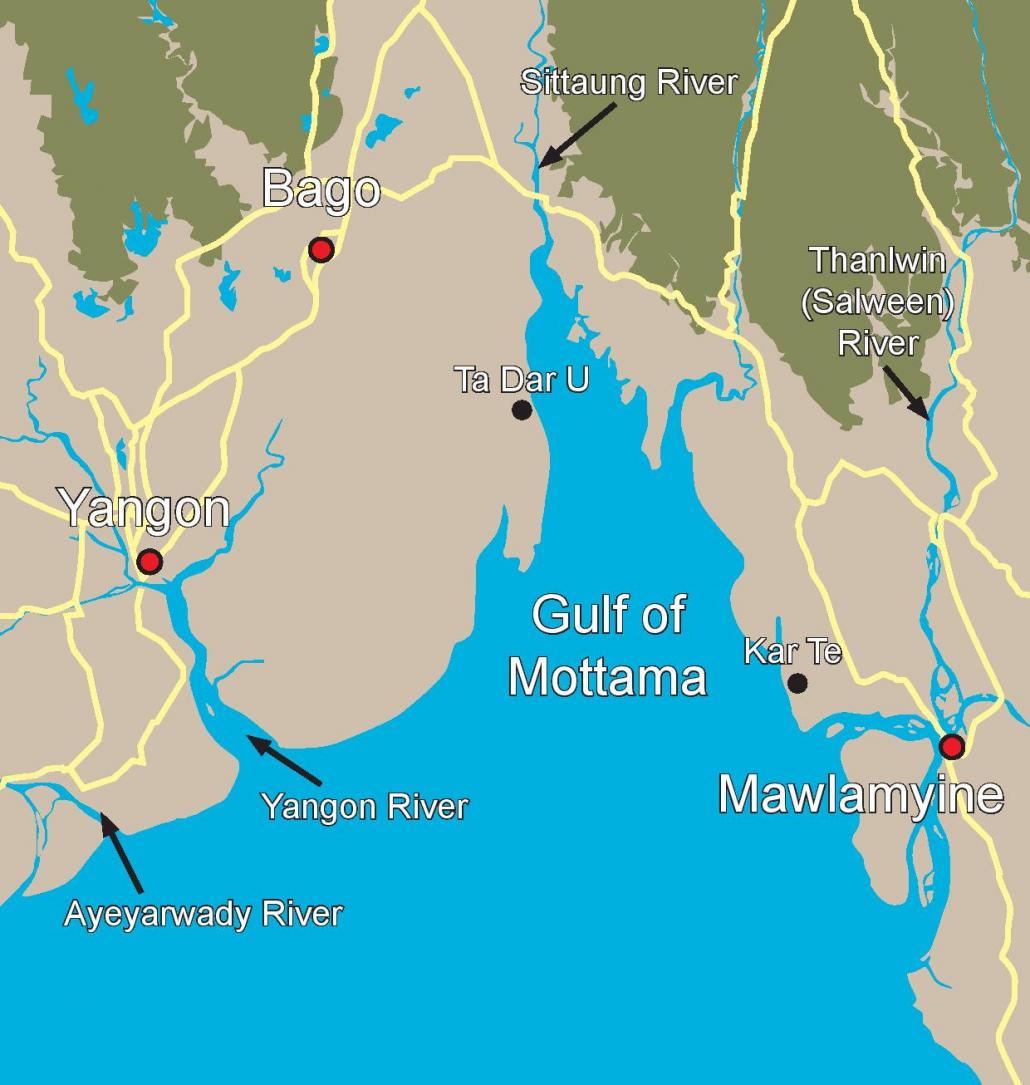
typeof=
They face a grim future. As well as riverbank erosion, their farmland is also threatened by saltwater intrusion; once fields have been repeatedly flooded by seawater, they cannot be used to grow crops. The use of contaminated land as pasture for livestock is also limited because cattle spurn grass that is too salty. Embankments provide some protection against flooding by sea water at high tide, but they cannot halt the erosion and are themselves being eroded over time.
“In the past 30 years, we had to move further landwards three times,” Ma Thaw Htwe, 43, a mother of three, told Frontier in her small bamboo home.
Three years ago her home stood in Ma Mauk village, but when the tide threatened to wash the village away the family pulled it apart and reassembled it a couple of kilometres landwards, close to where the villagers of Ta Dar U have also erected their new houses.
Thaw Htwe said her husband was a fisherman before they moved. “He had to sell all his equipment so we could at least buy a little parcel of land and erect our house here,” she said.
Her husband tries to eke out a living as a casual day labourer and Thaw Htwe sells cigarettes, betel nuts, tea and beer from their shared home, which lacks electricity.
While Thaw Htwe’s husband has given up fishing, for former Ta Dar U residents it is the only job that offers a stable income. U Myo Zaw Win, a father of three, received Frontier in the new monastery, which Ta Dar U residents have built from wood so that it can be disassembled if they need to move again.
“I lost my farmland to the water, and I would prefer to keep farming. But almost nobody here can afford to buy new farmland,” he said. “I don’t like [fishing]. On one day I earn K3,000, on another it’s K20,000, but on average it’s certainly less than what I made as a farmer.”

Wild crabs are the main business in Kar Te village, but they are often caught when they are still small, which creates challenges for the industry’s sustainability.
In 2015, the hardship of the area’s residents motivated the Swiss Agency for Development and Cooperation (SDC) to launch a project in 30 of the gulf region’s 86 villages that focuses on conservation and sustainable development. The project is implemented by a consortium headed by Switzerland-based NGO Helvetas together with the IUCN and Myanmar NGO Network Activities Group.
“Our goal is to improve the livelihoods of the people while maintaining the region’s unique biodiversity,” Mr Markus Buerli, SDC’s programme manager, told Frontier.
The SDC has allocated nearly US$12 million to the project between 2015 and 2021, and more funding may be in the pipeline if the work receives approval to continue until 2024.
Buerli said the project’s success would be built on a range of factors, including strong, inclusive local institutions, a better understanding of the gulf’s complex natural cycles, sustainable agriculture and fisheries, and diversified income sources.
As part of the project, a study has been completed aimed at understanding why the Sittaung changes course. Efforts are also being made to improve coordination between different levels of government responsible for managing the gulf environment.
Communities have received a range of assistance, including help to establish seed banks of climate-resilient crop varieties, to build ponds for drinking water and to comply with a recent ban of certain types of fishing nets.
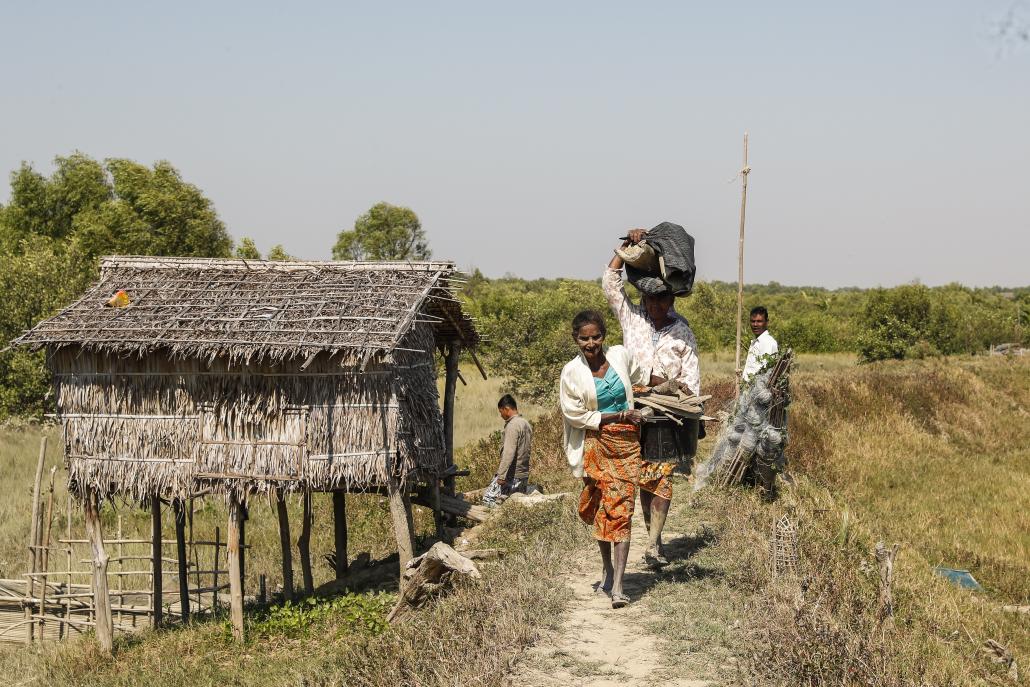
Near Kar Te village in Mon State’s Paung Township, the sediment and strong tides in the Gulf of Mottama have formed 120 acres of new land since 2011 – and brought conflict over who has the right to use it.
The tide giveth and taketh away
The tidal bore does not just devour land; it also replaces it in the form of sediment. This is what is happening in Kar Te village, in Mon State’s Paung Township, on the opposite side of the gulf.
“I have never seen erosion near our village in my lifetime,” said U Thein Saung, 45, who is the cashier of Kar Te’s village development committee. Sediment has been deposited on about 120 acres of land on which mangroves grow, and the land has become a focus of both community hope and disharmony.
A local official is alleged to have annexed several hectares of the land for his own use. Although many villagers are upset at his actions, they say they feel powerless to intervene. Instead, they are trying to protect and preserve the remaining area of mangrove forest by having it designated as a community forest by the Mon State government. (The official could not be reached for comment.)
When the villagers proposed the idea, Helvetas did what it could to help. “Land conflicts recur often here, where territory sometimes builds up quickly and no concise law defines how to handle these situations,” said Mr Jos van der Zanden, the project’s chief technical advisor at Helvetas. “We therefore try to enable the locals to find sustainable solutions themselves, for instance by helping them to install a representative village development committee or by helping them to submit pleas to the authorities. But we won’t directly ask the government ourselves for any legislation, since we are not a political advocacy group.”
It was because of this pragmatic approach based on co-management between communities and government departments that 45,000ha in Bago Region and Mon State near the mouth of the Sittaung River was in 2017 designated as the fourth site in Myanmar under the Ramsar Convention, an international treaty for the conservation and sustainable use of wetlands. The other sites are the Moeyungyi Wetlands Wildlife Sanctuary, also in Bago; Indawgyi Wildlife Sanctuary in Kachin State; and the Meinmahla Kyun Wildlife Sanctuary in Ayeyarwady Region.
The designation of the Sittaung River mouth as a Ramsar site commits government bodies to support the sustainable use of the area. Both the Mon State and Bago Region governments have endorsed a management plan drawn up by Helvetas towards meeting this goal.
The designation does not have to inhibit the development of the area, particularly for tourism. Helvetas has recently commissioned a study on how best the region might be promoted as an eco-tourism destination. Located close to Yangon, one can easily imagine it becoming a destination for birdwatchers or even surfers. The unique features of the area might be destroying some villages and livelihoods, but if harnessed properly they could also be a stepping stone to prosperity.
Top photo: The remains of the monastery at Ta Dar U village, by the Sittaung River about 50 kilometres southeast of Bago. (Nyein Su Wai Kyaw Soe | Frontier)


